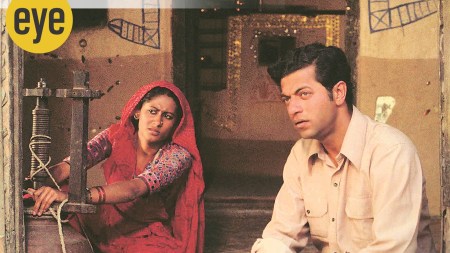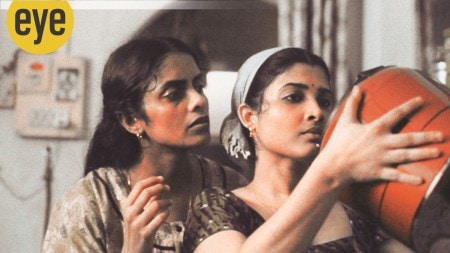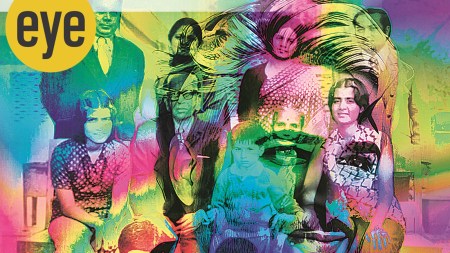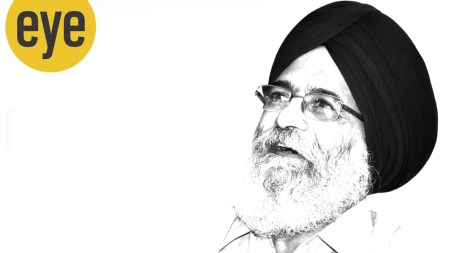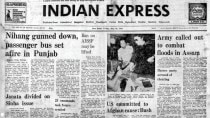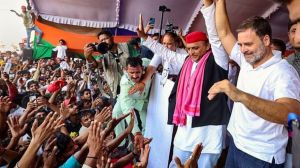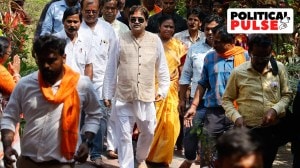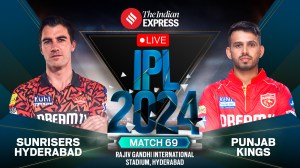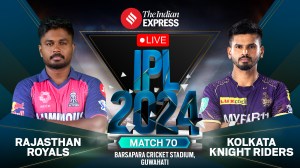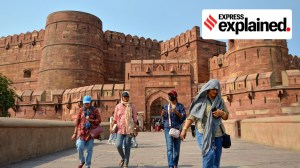- India
- International
U R Rao was key link in India’s space programme
Those who criticise us for our space programme do not understand how we are using this for our socio-economic development. Our planners, our pioneers and our policy makers realised the importance of this. These countries are the ones incapable of doing what we have done – which is to have developed a full system from end-to-end, and how to use space for national development.
 Vikram Sarabhai had entrusted the task to his former student and protégé, U R Rao. (File photo)
Vikram Sarabhai had entrusted the task to his former student and protégé, U R Rao. (File photo)
It was the 1970s. We had lost Vikram Sarabhai, the father of the Indian space programme, in December 1971. Professor Satish Dhawan became the second chairman of Indian Space Research Organisation (ISRO) after a brief gap that Professor MGK Menon filled. There was an agreement between India and the Soviet Union that ISRO would develop a satellite heavier than the 40 kg one that we were building at the time, and it would be sent to orbit in a Soviet launch vehicle.
Sarabhai had entrusted the task to his former student and protégé, U R Rao. After him, Menon and Dhawan agreed that Rao should assume the full responsibility for this project. That essentially meant the following:
First, a laboratory had to be built, as there were no labs to build a satellite of this kind. It was decided to locate it in Bangalore because there were a lot of aerospace industries and other supportive elements, labs here, like the National Aerospace Lab, and other defence labs. Then the manpower had to be created from scratch. And the very knowledge of building this satellite, which is essentially the knowledge of the design and development of the satellite, had to be developed.
U R Rao had to lead, organise and realise this project. The deadline set by Madam Indira Gandhi: 30 months. It was a very tall order. It seemed an impossible task to do all this, including testing the satellite’s ability to function in space, install ground controls, the works. But we did it – we delivered Aryabhatta, India’s first satellite, not in 30 months, but, under Rao’s leadership, we completed it in 36 months. It was a great, exciting journey for the whole team, all of us.
That was Professor Rao’s first big milestone in ISRO. I would say that he achieved something very unique in the annals of our space programme.

Rao was a physicist. He had got his MSc degree in Physics from Benares Hindu University, after schooling in Anantapur in Andhra Pradesh. He taught for a while at Mysore University before joining Dr Vikram Sarabhai and his group at the Physical Research Laboratory in Ahmedabad. They were doing research on cosmic rays and their variations. Rao got his Phd. in this, and Sarabhai was his guide.
He was among the first to work on an interplanetary mission, when he was at the South West Centre for Advanced Studies at the University of Dallas in Texas. He had moved there after a stint at MIT. The importance of Dallas in his life was that he got an opportunity to work in the American Pioneer 6, Pioneer 7 and Pioneer 8 inter-planetary missions. It was a very major effort at that time, supported by NASA. Prof Rao got a real insight into the development of spacecraft.
When he came back, he joined his guru Sarabhai in India’s nascent space and satellite programme. His first responsibility was to develop a 40 kg satellite, but Aryabhatta took precedence.
In order to keep the 30-month deadline we had to rent industrial sheds in Peenya in the outskirts of Bangalore. There was no time to build big buildings. We converted the sheds into rooms to meet the requirements of satellite building.
After the launch of Aryabhatta, there was a general recognition and national appreciation of ISRO’s work. It was decided to build a more permanent place. And that was also entrusted to Rao, to set up the ISRO building, to create modern labs, and become the nerve-centre of India’s future satellite space programmes.
From here, ISRO continued to build satellites. It has now even gone on to doing planetary missions like Chandrayaan and Mars Orbiter. All this began with the historical development of Aryabhatta, Bhaskara and maybe even the Apple, an experimental communications satellite launched in 1981. Those were the early pioneers among the satellites, and put in stream what we see today as ISRO’s accomplishments– communication satellites, planetary probes, navigation satellites, scientific satellites. They were all the offshoot of the work that Prof Rao initiated, accomplished successfully.
In 1985, when Rao succeeded Dhawan as ISRO chairman, PSLV had just begun to be developed, SLV had been successfully flown, ASLV had also reached a level of success. PSLV was the most important vehicle that was to become the workhorse for ISRO’s many satellite programmes. This is one thing on which Rao worked during his tenure of nine to 10 years, he directed this programme, and around the fag end of his term, the PSLV was launched. Even though it can be characterized as not having succeeded, what is important to know is that we just missed it by a whisker. It was found that there was only a very silly thing that had been overlooked. At that time the vehicle was already available to India, at almost 99 per cent of the maturity. That was again his leadership that made this possible.
Rao also initiated the work, design and development of the GSLV – 1 and also laid the foundation for GSLV -2.
In the 1990s, came the question of getting the cryogenic stages from the Soviet Union/Russia and the sword of US sanctions. The deal with Russia had to be negotiated with a lot of skill and good technical understanding. There again, Rao led the ISRO team and finally came to an agreement that India would get a supply of seven engines. We learnt the art of doing all this so that the second generation system could be built up in the country.
Those who criticise us for our space programme do not understand how we are using this for our socio-economic development. Our planners, our pioneers and our policy makers realised the importance of this. If you look even at the present PM, he is fully behind the efforts not only for rockets and satellites but also the way these are deployed for grassroots level development. The countries that criticise us are the ones who are incapable of doing what we have done – which is to have developed a full system from end to end, and how to use space for national development.
What was really unique about Rao was that apart from his dynamic leadership and institution building capacity, he had a quick and deep and intense understanding of technology. He was a good physicist, and through physical laws, he understood many things on engineering side. In the process, he could really question engineers when he reviewed their work. This has been an interesting facet of all chairmen of ISRO. They were technically very competent. It is also made them very much respected among professionals.
Even though he was deeply immersed in ISRO’s projects, Rao never abandoned his research – cosmic rays, astronomy, environmental sciences. He totally believed that if you want to keep your mind very sharp and alert in the programme, you need to have these kind of activities.
When we bought the first INSAT from Ford Aerospace, he went to review them. And I should say his reviews were very incisive, candid and absolutely professional. So the people on the other side, the Americans, were always on their toes when they had to present their case of their own systems.
I had a very good personal equation with him, it was great fun working with him. I enjoyed every minute of my long association with him. I think it was a very special privilege in my life to have been associated with him, and with that team.
Rao was internationally very well recognised. He always led India’s group at the UN Outer Space committee. He was very influential. He was a great motivator of people. I worked with him for decades. The inspiration and guidance I received, and the insights I learnt in dealing with complex systems, they were all the result of the way in which I worked with him. They were extraordinary as a group, the men who led the early years of ISRO.
As told to Nirupama Subramanian, Indian Express’ National Editor (North)
40 Years Ago
EXPRESS OPINION
Must Read
More Explained
May 19: Latest News
- 01
- 02
- 03
- 04
- 05


